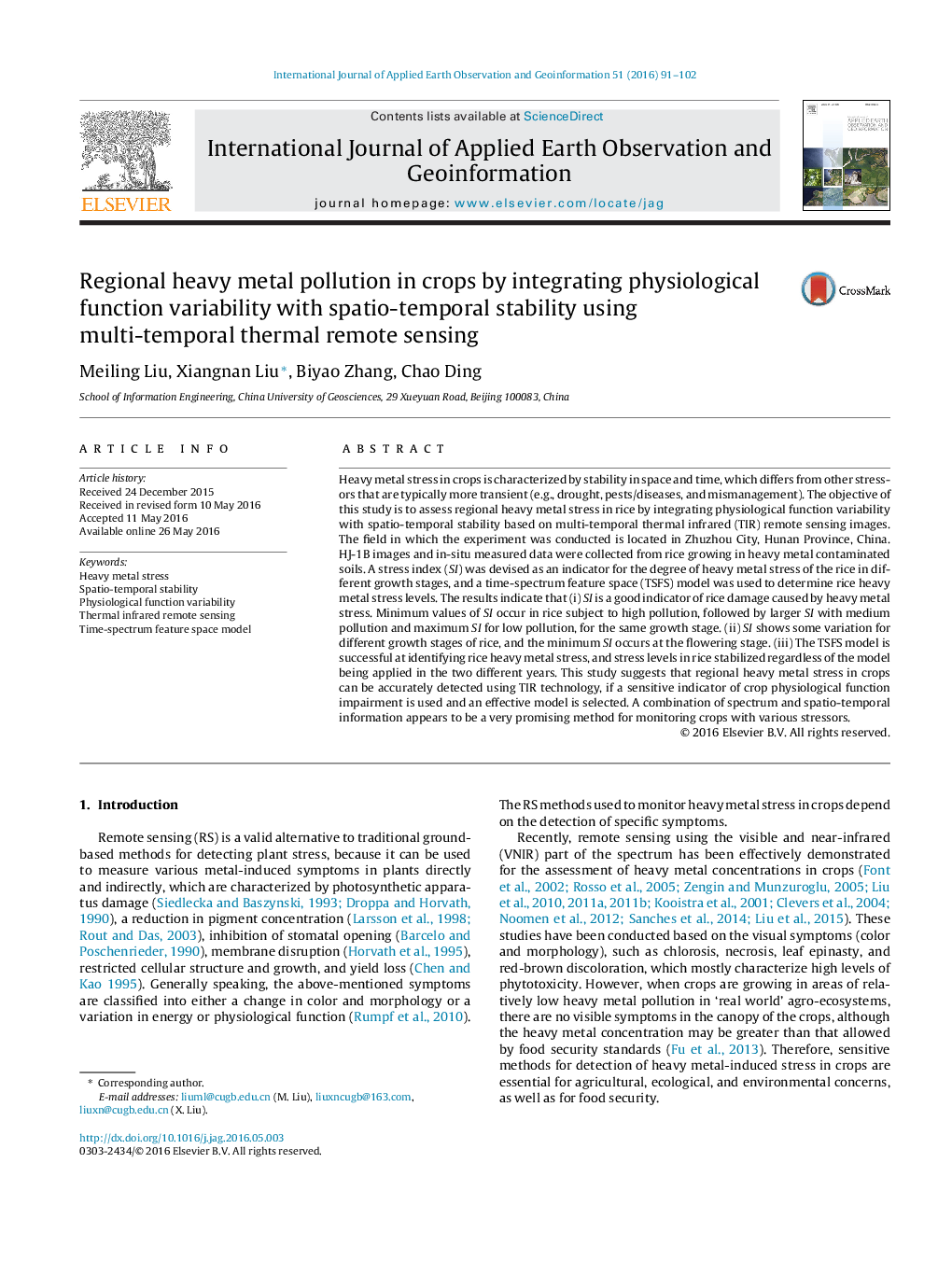| Article ID | Journal | Published Year | Pages | File Type |
|---|---|---|---|---|
| 4464609 | International Journal of Applied Earth Observation and Geoinformation | 2016 | 12 Pages |
•Heavy metal stress in crops is characterized by stability in space and time, which differs from other stressors.•Physiological function indicator was combined with spatio-temporal feature to detect heavy rice with heavy metal stress.•The indices and models based on thermal infrared (TIR) data were adopted to assess heavy metal stress levels in rice.•The predicted results are consistent with the actual distribution of stress levels of rice under heavy metal.
Heavy metal stress in crops is characterized by stability in space and time, which differs from other stressors that are typically more transient (e.g., drought, pests/diseases, and mismanagement). The objective of this study is to assess regional heavy metal stress in rice by integrating physiological function variability with spatio-temporal stability based on multi-temporal thermal infrared (TIR) remote sensing images. The field in which the experiment was conducted is located in Zhuzhou City, Hunan Province, China. HJ-1B images and in-situ measured data were collected from rice growing in heavy metal contaminated soils. A stress index (SISI) was devised as an indicator for the degree of heavy metal stress of the rice in different growth stages, and a time-spectrum feature space (TSFS) model was used to determine rice heavy metal stress levels. The results indicate that (i) SISI is a good indicator of rice damage caused by heavy metal stress. Minimum values of SISI occur in rice subject to high pollution, followed by larger SISI with medium pollution and maximum SISI for low pollution, for the same growth stage. (ii) SISI shows some variation for different growth stages of rice, and the minimum SISI occurs at the flowering stage. (iii) The TSFS model is successful at identifying rice heavy metal stress, and stress levels in rice stabilized regardless of the model being applied in the two different years. This study suggests that regional heavy metal stress in crops can be accurately detected using TIR technology, if a sensitive indicator of crop physiological function impairment is used and an effective model is selected. A combination of spectrum and spatio-temporal information appears to be a very promising method for monitoring crops with various stressors.
